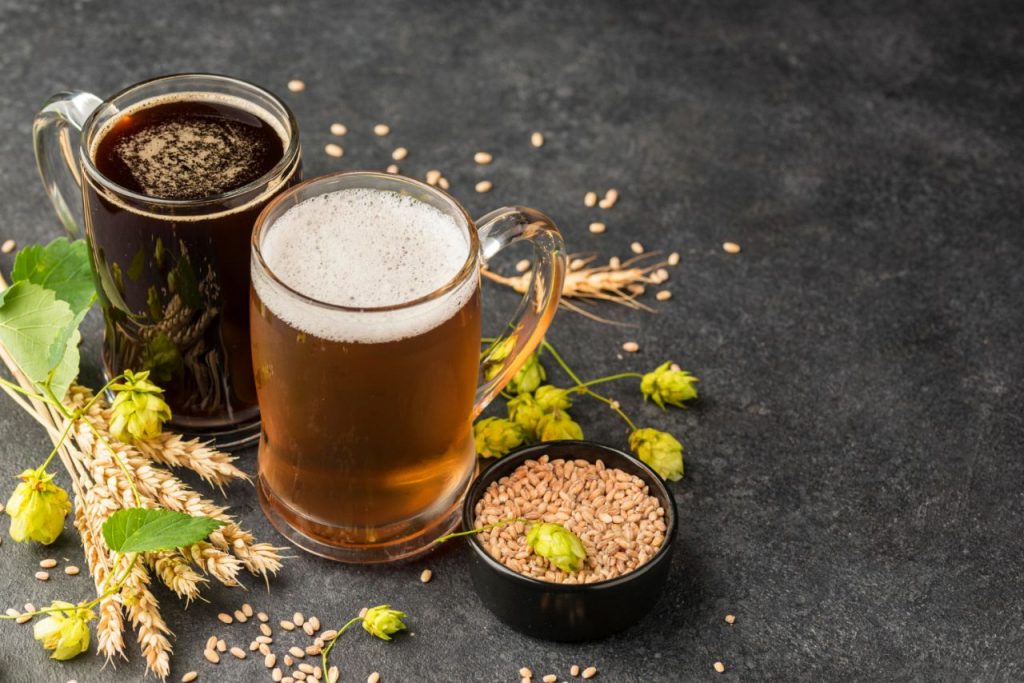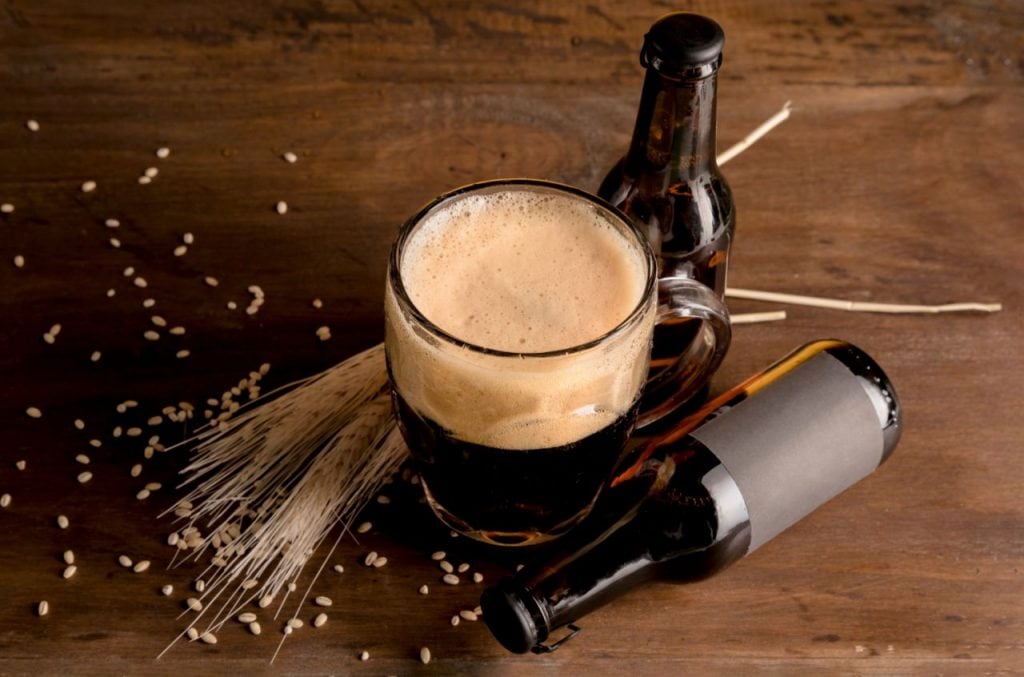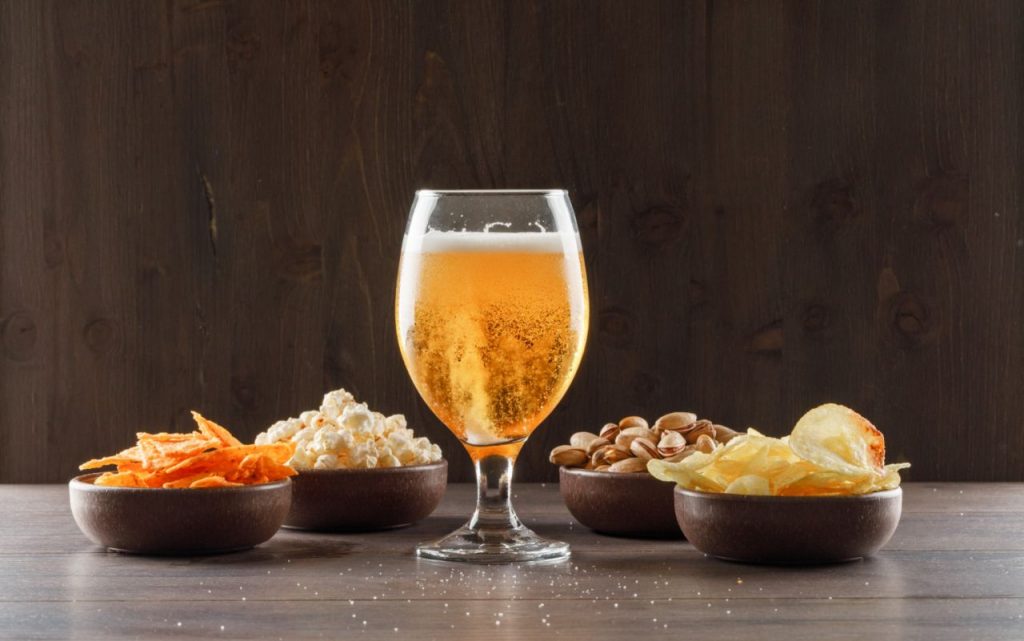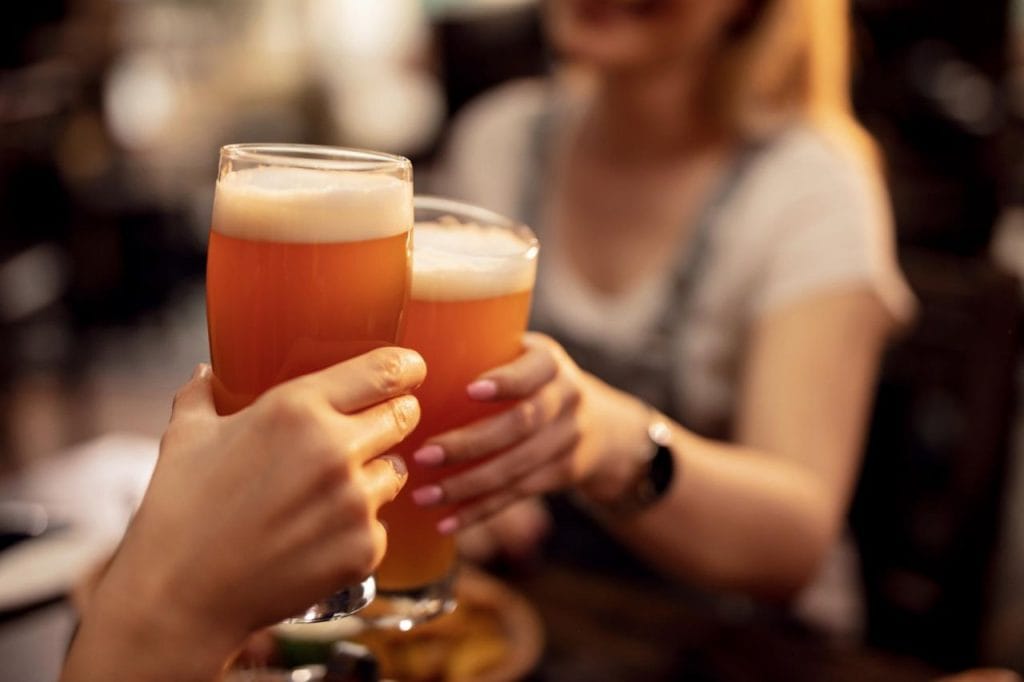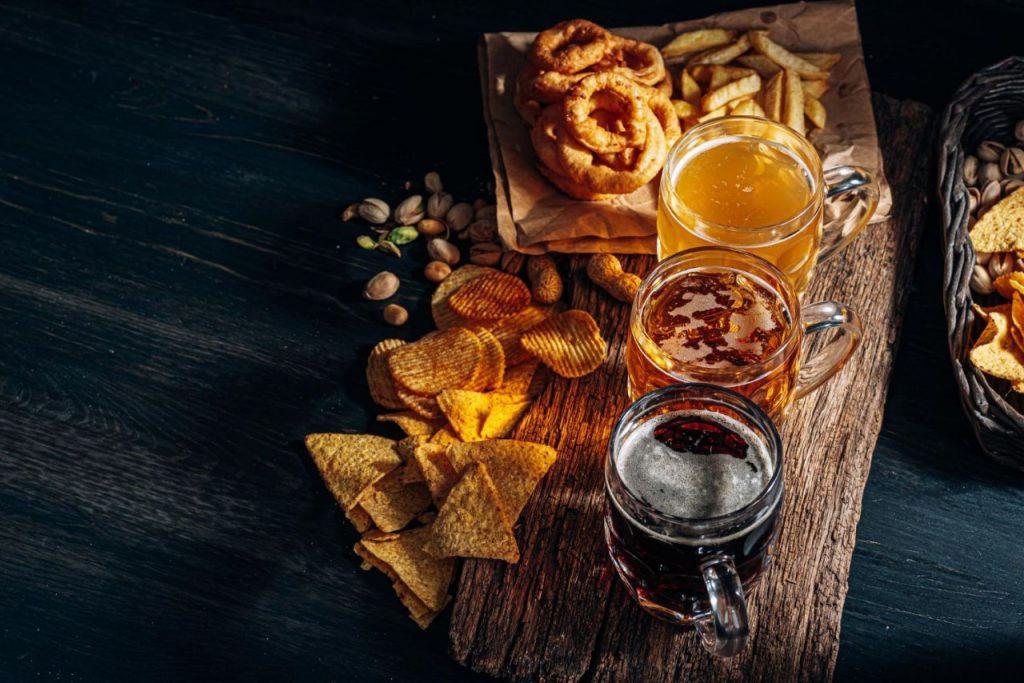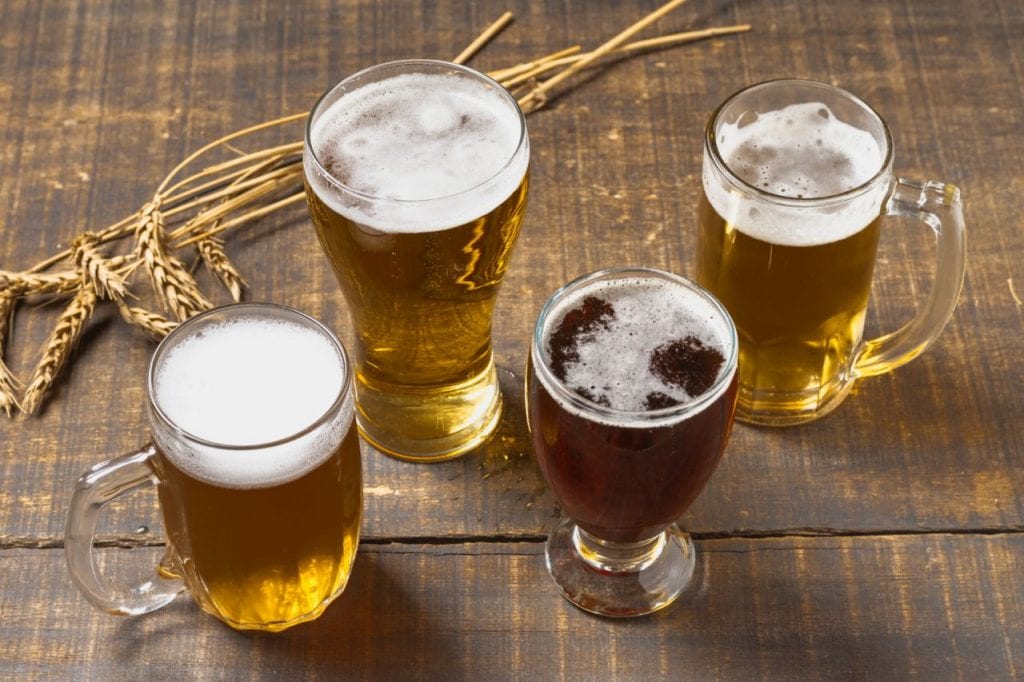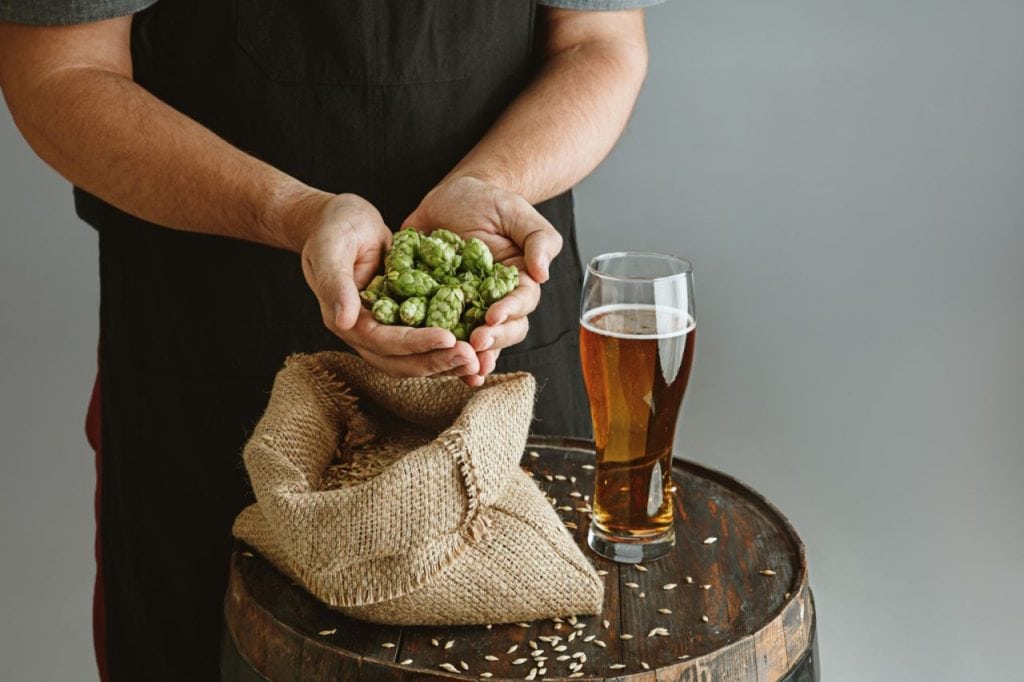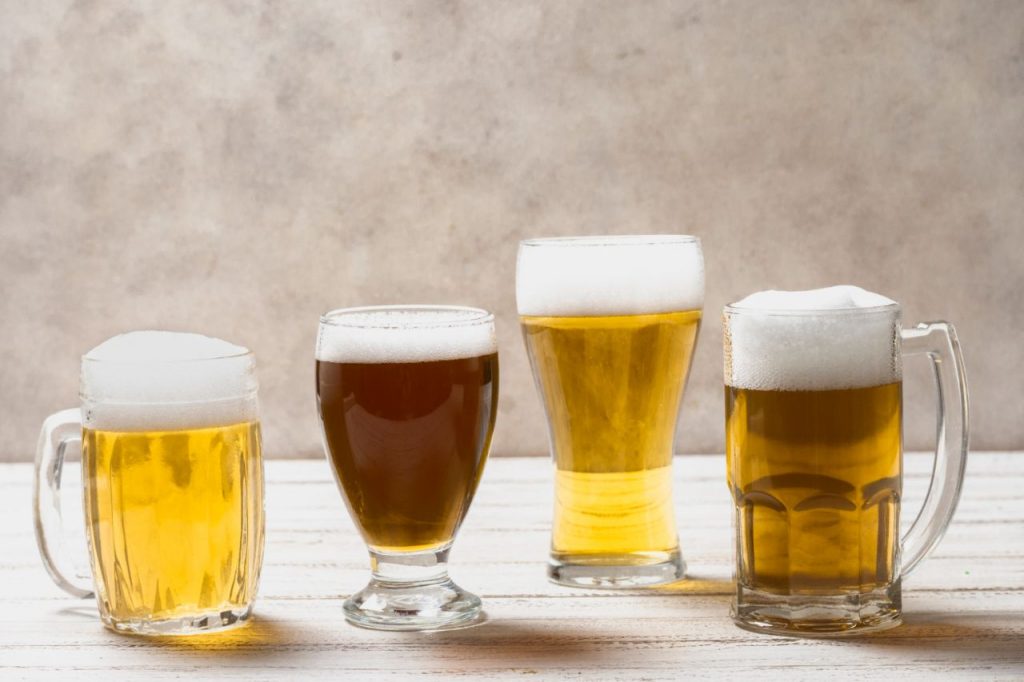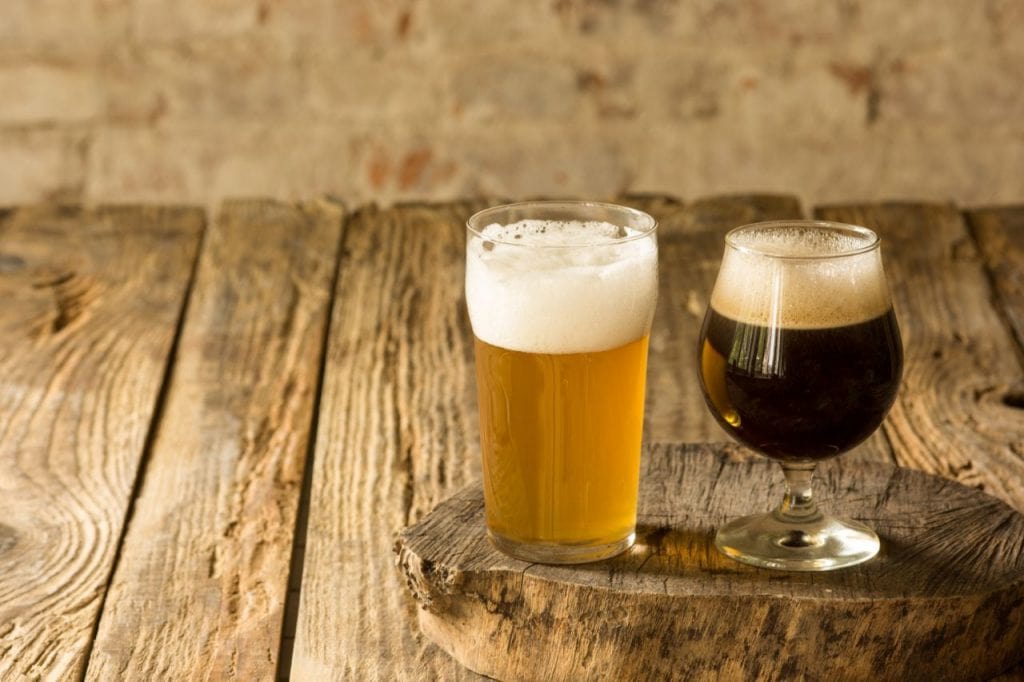There are many different types of sour beer, each emphasising the beer's acidity. The slightest hint of acidity in something may be quite refreshing. However, sour beers also make your face pucker and your eyes water. Craft brewers produce many different styles, so it shouldn't be hard to discover something you like.
If you have a friend who is liked by everyone she has ever met, you should try a quality sour beer. Like a friend who is liked by everyone she's ever met, a good sour beer may bring people together. In general, people who don't like beer may be intrigued by a sour because it doesn't have the typical beer flavour profile.
Conversely, beer enthusiasts appreciate a sour for its diverse flavours despite lacking the traditional beer taste. The expansion of craft brewers across the United States has also made it much easier to hunt down some varieties of sour beer. In contrast, classic examples of this kind were infamously hard to come across. Again, this is due to the difficulty of locating authentic examples of this style.
But a substantial portion of the population still can't stand sour flavours. The younger generations are most affected by this. Everything you need to know about placing an order for one is included here.
What Is The Taste Of Sour Beer?
As you try new beers, you may notice that some include a sour flavour more than others. In contrast, the acidity of a tart wheat brew like Melon Gose is very light on the palate; it's refreshingly sharp, makes you say "Ahh," and makes you want another sip.
Probably, you're taking your time to drink. Wild yeast, brewer's yeast, and lactic acid bacteria are used for fermentation. In addition, we age it for over a year in red-wine barrels before adding delicious cherries and finally bottle conditioning it with champagne yeast to achieve its beautiful bubbles.
What's The Difference Between Sour Beer And Saison?
Belgian Saisons are ales; however, sour beers could be either a lager or an ale. Both types of beer tend to be quite carbonated and refreshing. Saisons can range from mildly tart to extremely puckering, depending on the brewing technique.
Sour beer can be made in many ways. This sour flavour is the result of the addition of an acid-producing bacterium during the fermentation process.
Most beers are fermented with a strain of yeast called Saccharomyces. Brettanomyces (often known as "Brett") is a wild yeast species that can be added to the wort to produce a sour beer. Some brewers intentionally include lactic acid bacteria, such as Lactobacillus and Pediococcus (as in yoghurt). Fruit or acetic acid can be added to the last stages of the second fermentation to impart a sour taste.
The wort in a saison can be fermented with Brett, Lactobacillus, or sourdough starter. Beer's acidity is toned down because it's often used in tandem with Saccharomyces and at lower concentrations than sour beer.

Common techniques for making sour beers use wild yeast and bacteria. This can be accomplished in some ways:
- A mixture of yeasts and bacteria, including Saccharomyces and Brett, is used in a mixed fermentation.
- Beer made with a wild fermentation process often undergoes a lengthier fermentation time and can be brewed with either Brett or Saccharomyces.
- Spontaneous fermentation, which uses the yeast and bacteria already in the air or the beer's ingredients, might take years.
Sour beer is difficult to control when brewed with wild yeast and bacteria. Due to the risk of contamination, many breweries avoid using wild yeast for sour beers.
Which Styles Of Beer Are Considered To Be Sour?
There is not a single type of sour that can be singled out and identified. So instead, here are some diverse styles:
Berliner Weisse
This traditional wheat beer from Germany was initially brewed as an ale, but nowadays, it's more common to find it crafted as a lager. It is considered a beer that is foggy, pale and has a high level of carbonation. Additionally, the alcohol content is rather low. Berliner Weisse has a hoppiness that runs from 3 to 6 Worldwide Bittering Units (IBUs), resulting in a pleasantly sour beer.
Lambic
Wheat beer originates in Belgium and is produced through spontaneous fermentation. It has a light body and a sour aftertaste and is known for both characteristics. It is standard practice to brew it during the cooler months, let it mature for at least one year, and frequently combine cherry and raspberry flavours in its flavour profile.
This is done to give it a fruitier taste. However, because the beer is kept out in the open, where it is subjected to brisk air, there is a possibility that it will become tainted by the free-floating wild microorganisms that are present. Gueuze, a lambic, is normally made by blending different lambics of varying maturities. Geuze is a form of lambic.
Gose
A traditional German sour beverage that is made by combining coriander and salt with other ingredients. Goes have diverse flavours, but there is always harmony between the salty, herbaceous, and sour components. Gose is traditionally served at room temperature. The traditional temperature for serving goes is room temperature.
Oud Bruin
Oud Bruin is a beer brewed in Flanders in Belgium for a significant portion of the country's history. The observance of this custom goes back many decades. Its colour can range from dark copper to brown, depending on the angle at which the light strikes it. Although it has an acidity comparable to vinegar, the primary focus of attention is placed on the fruity tartness heightened by the rich malt. In addition to that, there is a chance that it has a hopping quality to it. When expressed as a percentage of the total volume, the quantity of alcohol can be anything from a moderately moderate 4 per cent up to an extremely full 11 per cent. This range of possibilities is conceivable because alcohol is measured in percentages.
Flanders
A beer style traditionally produced in Belgium is distinguished by the fact that it is fermented in extremely large wooden vats during the brewing process. Acidity, sweetness derived from fruit and vanilla, and various other flavours can be found in Flanders ales. These ales also offer some other flavours in addition to these flavours.
The flavour of brown Flanders tends to be more reminiscent of earth, raisins, and plums, whilst the flavour of red Flanders tends to be more reminiscent of fruit. Brown Flanders also tends to be drier than red Flanders. When compared to red Flanders, brown Flanders have been aged for a longer amount of time.
How To Serve Sour Beer?
Sour beers are best served between 45 and 50 degrees Fahrenheit. The mild cold mutes some of the more pronounced acidic overtones in the beer. This makes the beverage more pleasurable to consume due to the ease with which it may be consumed due to the moderate chill. Due to the appealing aesthetic of the stemmed tulip glass, it is frequently used as the vessel of choice when serving acidic beverages.
This is since the shape, more so than any other feature, attracts attention to the actual sensation of smelling the aroma. In addition, some drinkers want their nose to be icy cold, just as it would be if it had been kept in the refrigerator; they eat it by taking sips out of extremely large fluted glasses. When pouring sours, you should start by turning the glass upside down and gradually bringing it back to its regular position as the beer fills the glass. This will help prevent the beer from spilling out of the glass. This is the standard way any beer should be poured, regardless of the beer being poured.
Food Pairings
If there is only one type of beer you are required to bring to the meal, you should bring one with a flavour similar to tart cherries. Due to the sour flavour that it radiates and its revitalising properties, this beer is fairly adaptable and can be enjoyed with a wide variety of cuisines. But, again, this is because of the characteristics that it offers.
Dishes that lend themselves perfectly to being cooked on a grill, fish that has been expertly seasoned, and main courses that incorporate shellfish are some of the foods that make for some of the most successful combinations of food and wine. These are also wonderful beers to pair with spicy foods such as curry dishes or chilli sauce, as they will provide a refreshing relief from all of the heat contained in the cuisine.
On the other hand, these brews are also good accompaniments to winter comfort foods such as hearty stews and savoury meat dishes. These foods would benefit from a contrast that would quench one's thirst between the various components of the dish, and these brews are the perfect way to achieve that contrast.
Best Brands
Anyone who has never had a sour beer before can quickly start drinking it and learning everything this style of beer offers without much of a learning curve. If you like wheat beer, you might want to experiment with other styles like Berliner Weisse or Gose.
- Fair Isle Brewing
- Rodenbach
- Liefmans Brewery
- Stone Brewing Berliner Weisse
- Mikkellers
- Brouwerij 3 Fonteinen
- New Belgium Sour IPA
- Firestone Walker
How Are Sour Beers Made?
The process we utilise to manufacture Wild Little Thing is referred to as "rapid kettle souring," and it's one of the techniques we use. To manufacture wort, an unfermented version of the beer, the first thing that must be done is to remove all of the hops from the beer. Next, we add a small amount of this one-of-a-kind wort to the overall volume of wort used in Wild Little Thing, perhaps around 10 per cent, to ensure the "Slightly Sour" flavour profile will remain faithful to its original form.
Immediately before the process of corking the bottles, a minute amount of wild Brettanomyces yeast in a microdose was introduced to each bottle of Brux. This was carried out under extremely stringent controls to ensure that the beer's quality was not affected. After that point, the "Brett" yeast will consume any leftover sugars in the bottle, ultimately producing flavours that have a more earthy and real feel.
Spontaneous fermentation is a different sort of fermentation that takes place when the brewers let the bacteria in the beer originate from the environment around them. This type of fermentation is known as "wild fermentation."
Conclusion
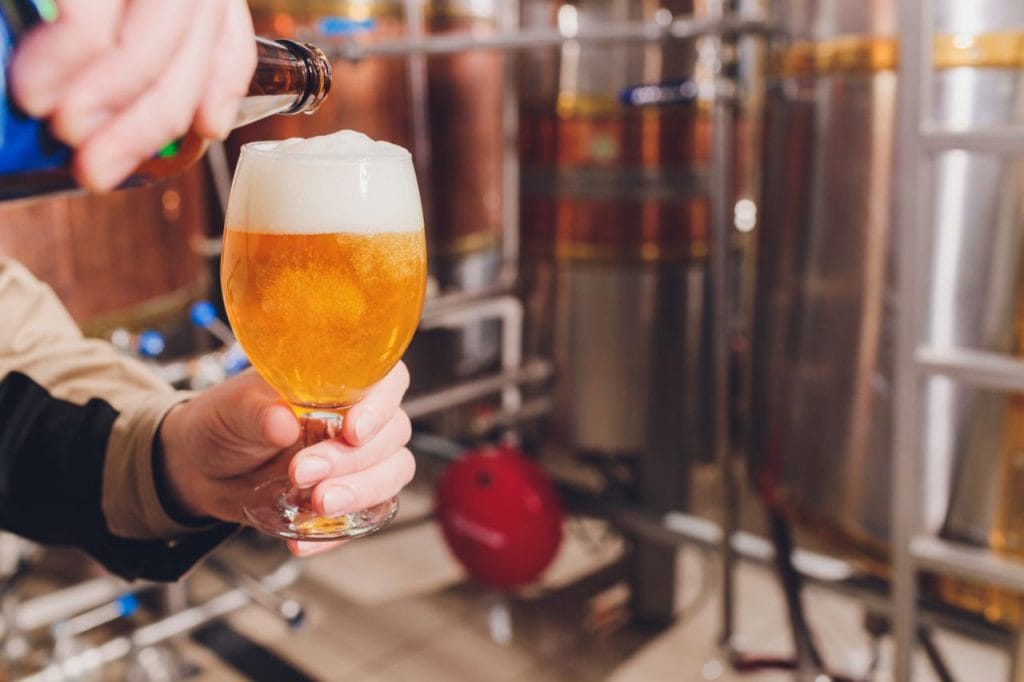
Craft brewers produce many different styles, so it shouldn't be hard to discover something you like. Saisons can range from mildly tart to extremely puckering, depending on the brewing technique. Sour beers could be either a lager or an ale - both of which are carbonated and refreshing. Most beers are fermented with a strain of yeast called Saccharomyces. Brettanomyces is a wild yeast species that can be added to the wort to produce a sour beer.
Some brewers intentionally include lactic acid bacteria, such as Lactobacillus and Pediococcus. Oud Bruin has been brewed in Flanders in Belgium for significant portions of the country's history. Although it has an acidity comparable to vinegar, the primary focus is on fruity tartness. Geuze is a lambic made by blending different lambics of varying maturities. Sour beers are best served between 45 and 50 degrees Fahrenheit.
The mild cold mutes some of the more pronounced acidic overtones in the beer. Due to the appealing aesthetic of the stemmed tulip glass, it is frequently used as the vessel of choice when serving acidic beverages. Sour beers are wonderful accompaniments to dishes such as fish, stews and savoury meat dishes. They provide a refreshing relief from all of the heat contained in the cuisine. Try other styles like Berliner Weisse or Gose if you like a wheat beer.
Content Summary
- There are many different types of sour beer, each emphasising the beer's acidity.
- However, sour beers also make your face pucker and your eyes water.
- Craft brewers produce many different styles, so it shouldn't be hard to discover something you like.
- If you have a friend who is liked by everyone she has ever met, you should try a quality sour beer.
- Like a friend who is liked by everyone she's ever met, a good sour beer may bring people together.
- In general, people who don't like beer may be intrigued by a sour because it doesn't have the typical beer flavour profile.
- Conversely, beer enthusiasts appreciate a sour for its diverse flavours despite lacking the traditional beer taste.
- The expansion of craft brewers across the United States has also made it much easier to hunt down some varieties of sour beer.
- Belgian Saisons are ales; however, sour beers could be either a lager or an ale.
- Both types of beer tend to be quite carbonated and refreshing.
- Most beers are fermented with a strain of yeast called Saccharomyces.
- Brettanomyces (often known as "Brett") is a wild yeast species that can be added to the wort to produce a sour beer.
- Common techniques for making sour beers use wild yeast and bacteria.
- This can be accomplished in some ways: A mixture of yeasts and bacteria, including Saccharomyces and Brett, is used in a mixed fermentation.
- Beer made with a wild fermentation process often undergoes a lengthier fermentation time and can be brewed with either Brett or Saccharomyces.
- Sour beer is difficult to control when brewed with wild yeast and bacteria.
- Due to the risk of contamination, many breweries avoid using wild yeast for sour beers.
- Which Styles Of Beer Are Considered To Be Sour?There is not a single type of sour that can be singled out and identified.
- So instead, here are some diverse styles: Berliner WeisseThis traditional wheat beer from Germany was initially brewed as an ale. Still, nowadays, it's more common to find it crafted as a lager.
- Wheat beer originates in Belgium and is produced through spontaneous fermentation.
- It has a light body and a sour aftertaste and is known for both characteristics.
- Geuze is a form of lambic.
- Gose is a traditional German sour beverage that combines coriander and salt with other ingredients.
- Gose is traditionally served at room temperature.
- The traditional temperature for serving goes is room temperature.
- Oud BruinOud Bruin is a beer brewed in Flanders in Belgium for a significant portion of the country's history.
- A beer style traditionally produced in Belgium is distinguished by the fact that it is fermented in extremely large wooden vats during the brewing process.
- Acidity, sweetness derived from fruit and vanilla, and various other flavours can be found in Flanders ales.
- These ales also offer some other flavours in addition to these flavours.
- The flavour of brown Flanders tends to be more reminiscent of earth, raisins, and plums, whilst the flavour of red Flanders tends to be more reminiscent of fruit.
- Brown Flanders also tends to be drier than red Flanders.
- When compared to red Flanders, brown Flanders have been aged for a longer amount of time.
- The mild cold mutes some of the more pronounced acidic overtones in the beer.
- Due to the appealing aesthetic of the stemmed tulip glass, it is frequently used as the vessel of choice when serving acidic beverages.
- This will help prevent the beer from spilling out of the glass.
- This is the standard way any beer should be poured, regardless of the beer being poured.
- Food PairingsIf there is only one type of beer you are required to bring to the meal, you should bring one with a flavour similar to tart cherries.
- Due to the sour flavour that it radiates and its revitalising properties, this beer is fairly adaptable and can be enjoyed with a wide variety of cuisines.
- Dishes that lend themselves perfectly to being cooked on a grill, fish that has been expertly seasoned, and main courses that incorporate shellfish are some of the foods that make for some of the most successful combinations of food and wine.
- These are also wonderful beers to pair with spicy foods such as curry dishes or chilli sauce, as they will provide a refreshing relief from all of the heat contained in the cuisine.
- On the other hand, these brews are also good accompaniments to winter comfort foods such as hearty stews and savoury meat dishes.
- These foods would benefit from a contrast that would quench one's thirst between the various components of the dish, and these brews are the perfect way to achieve that contrast.
- Anyone who has never had a sour beer before can quickly start drinking it and learning everything this style of beer offers without much of a learning curve.
- If you like wheat beer, you might want to experiment with other styles like Berliner Weisse or Gose.
- To manufacture wort, an unfermented version of the beer, the first thing that must be done is to remove all of the hops from the beer.
- Next, we add a small amount of this one-of-a-kind wort to the overall volume of wort used in Wild Little Thing, perhaps around 10 per cent, to ensure the "Slightly Sour" flavour profile will remain faithful to its original form.
- Immediately before the process of corking the bottles, a minute amount of wild Brettanomyces yeast in a microdose was introduced to each bottle of Brux.
- This was carried out under extremely stringent controls to ensure that the beer's quality was not affected.
- Spontaneous fermentation is a different sort of fermentation that takes place when the brewers let the bacteria in the beer originate from the environment around them.
FAQs About Sour Beer
What Makes A Good Sour Beer?
Traditionally, fermentation is temperature controlled so that the beer being made has a consistent taste. When it comes to sour beers, however, they are fermented with an acid-producing bacteria called Lactobacillus. Lactobacillus produces the tart lactic acid that is what makes the beer sour.
How Does Sour Beer Get Its Tart Flavour?
A sensation on the tongue known as tartness is brought on by the action of hydrogen ions (H+) from an organic acid on the flavour receptors of the tongue. The presence of these organic acids in sour beer–produced by wild yeast, fruit additives, and fermentations with lactic acid bacteria–distinguishes this style of beer from other types of beer.
What Happens If You Never Try Sour Beer?
It takes some getting used to before one can appreciate these beers' sour and spicy flavours. There is absolutely no way to get around that fact. But, if you don't give it a go, there's no way you'll ever figure out how to love it if you don't give it a shot.
Are Sours The Future Of Beer?
In a nutshell, it is anticipated that start beverages will continue to gain in popularity in the years to come. There is a possibility that the sour beer of the future will be identical to the sour beer of the past or both. An exciting new era has introduced a novel and intriguing beer style.
What Are The Most Popular Sour Beers?
From their perspective, some of the most popular types of sour beers that breweries produce are wheat beers that are light and sour, such as Berliner Weisse and goes. This makes a lot of sense, considering how similar these things are and how their high levels of lactic acid concentration render them sour and refreshing in the same way.
Traditionally, fermentation is temperature controlled so that the beer being made has a consistent taste. When it comes to sour beers, however, they are fermented with an acid-producing bacteria called Lactobacillus. Lactobacillus produces the tart lactic acid that is what makes the beer sour.
A sensation on the tongue known as tartness is brought on by the action of hydrogen ions (H+) from an organic acid on the flavour receptors of the tongue. The presence of these organic acids in sour beer–produced by wild yeast, fruit additives, and fermentations with lactic acid bacteria–distinguishes this style of beer from other types of beer.
It takes some getting used to before one can appreciate these beers' sour and spicy flavours. There is absolutely no way to get around that fact. But, if you don't give it a go, there's no way you'll ever figure out how to love it if you don't give it a shot.


